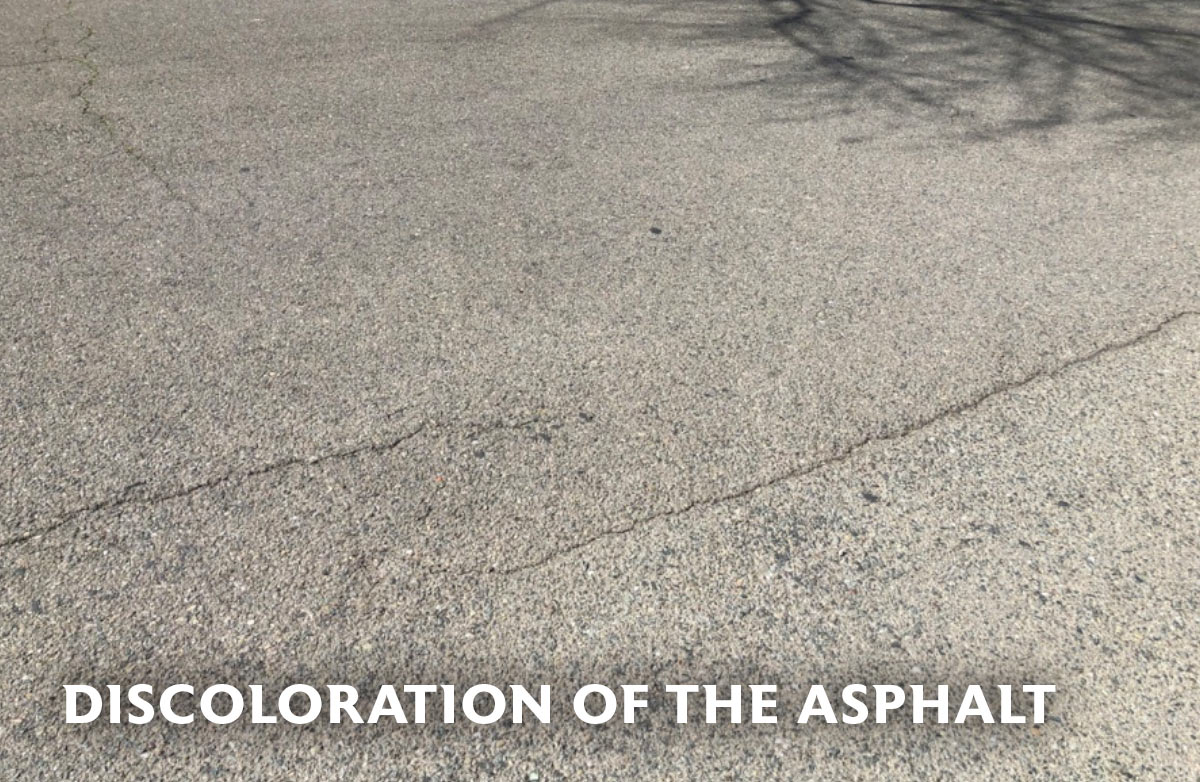Pavement Failure Warning Signs
 ALLIGATOR CRACKING:
ALLIGATOR CRACKING:
Do you see cracks in your asphalt like the rough skin of an alligator? This is called “alligator cracking,” also known as “fatigue cracking.” Unless the cracks are repaired, the entire lot will have to be completely removed.
Solution: Grind or slot cut the perimeter of the alligator-cracked areas. Compact sub-base to 90-95 percent compaction. Tack vertical edges and install hot asphalt concrete in equal lifts. Then, roll for proper compaction.
 RAVELING:
RAVELING:
Is loose gravel piling up on your asphalt or in gutters? Loose gravel on top oxidizes, further loosening the stone aggregate. Without proper care, this will lead to erosion.
Solution: If applied correctly, properly sealing the asphalt is the best solution and the least costly of all maintenance programs. Overlay with hot asphalt concrete, 1 ½ – 2 inches for the best result.
 DISCOLORATION OF THE ASPHALT:
DISCOLORATION OF THE ASPHALT:
Has your asphalt become discolored? This is oxidation. Over time, the deteriorating effects of sun and water have damaged the pavement, and the surface is beginning to break down.
Solution: Seal pavement with a high-quality refined coal tar emulsion or asphalt emulsion. This is usually sufficient to prevent further deterioration.
 CRACKING:
CRACKING:
Is your pavement beginning to deteriorate? Problems increase over time, and without repair total breakdown of the pavement is inevitable.
Solution: If cracks are not too numerous and not too deep, a hot or cold crack filler should be used to repair the damage. This should be followed by a seal coat.
 POTHOLES:
POTHOLES:
Potholes are caused when the pavement base has collapsed. Erosion has caused the surface to shift.
Solution: The decayed base must be replaced and compacted to ensure a solid foundation. The hole must be slot cut with square sides, then a tac-coat is applied to establish bonding between the new and old asphalt. The area is then filled with fresh asphalt and compacted to the level of the surrounding pavement.

